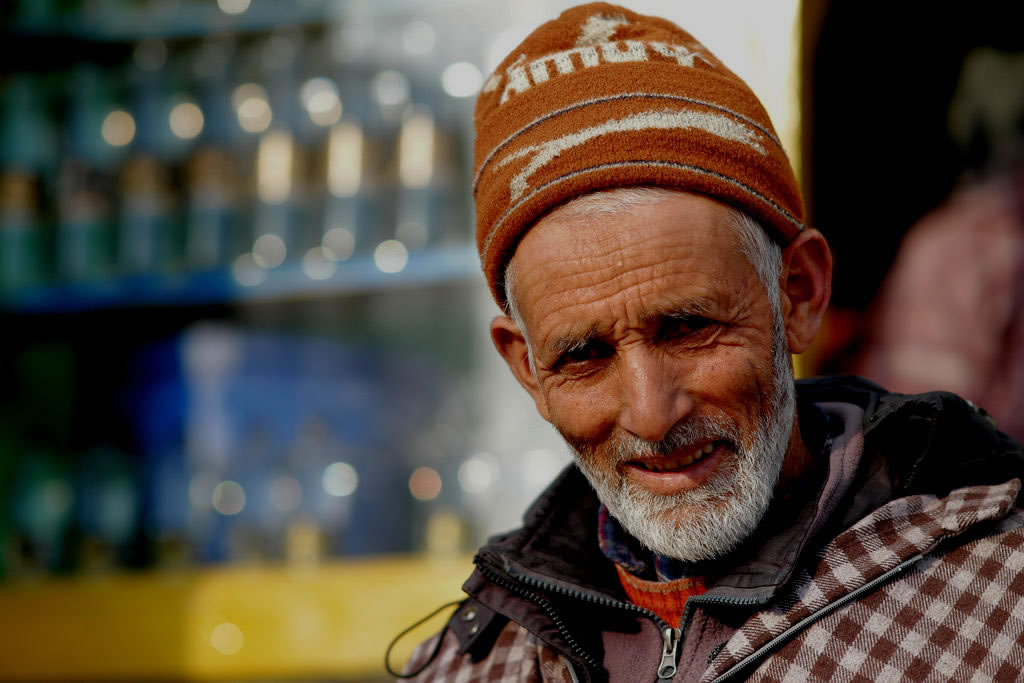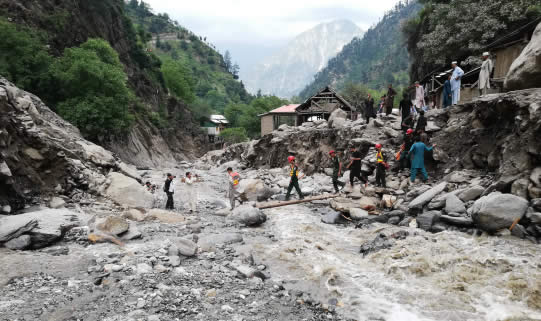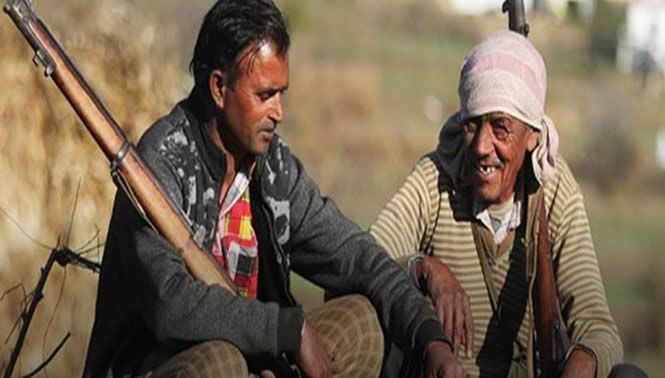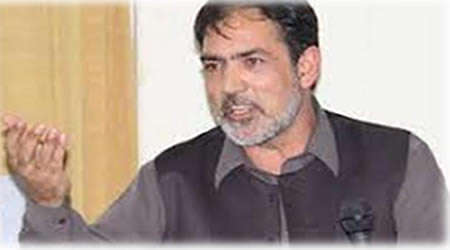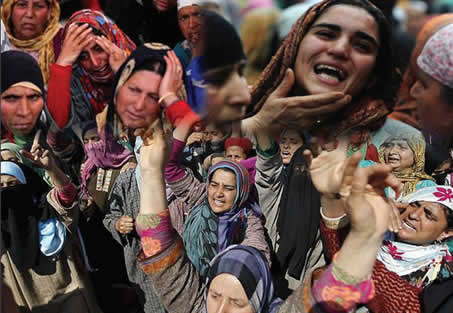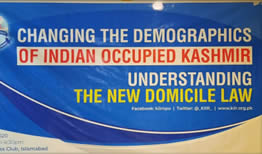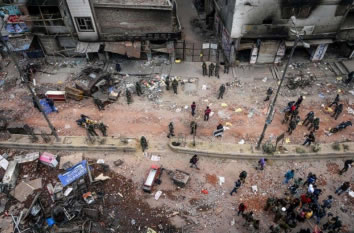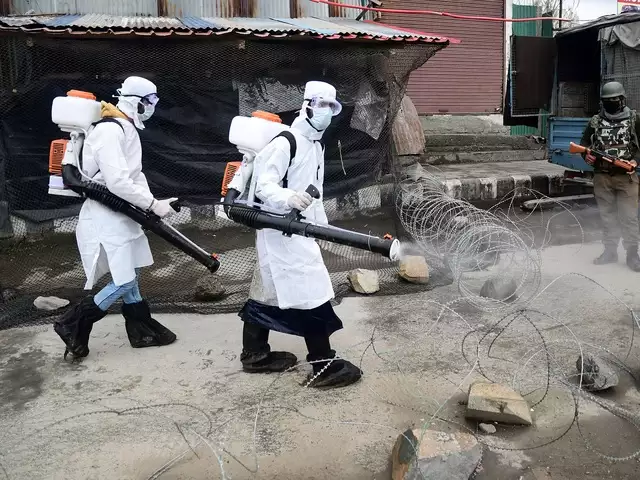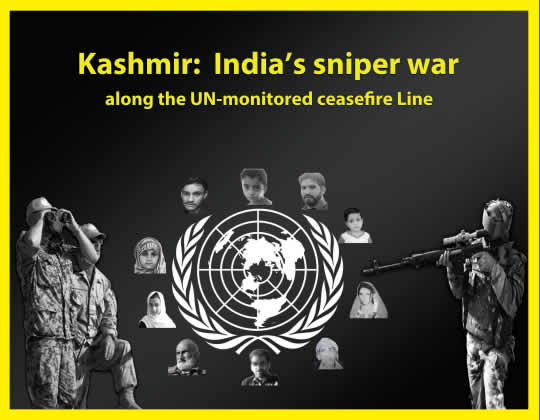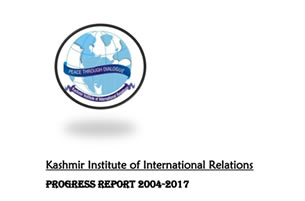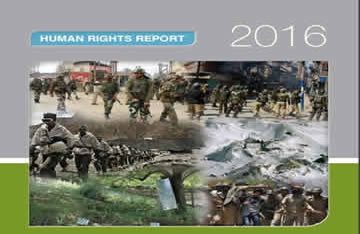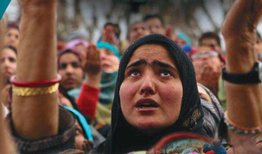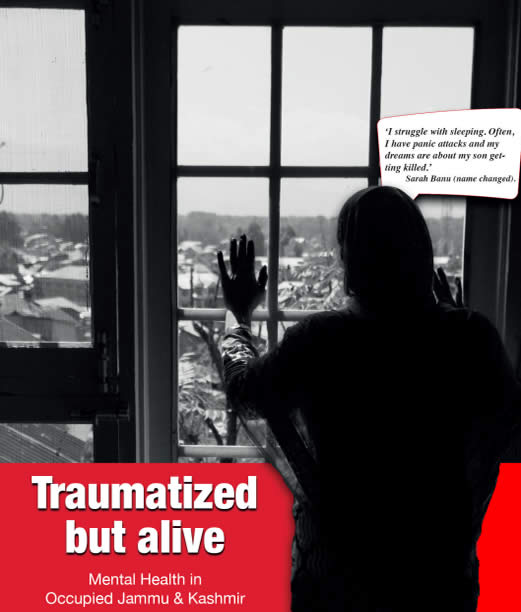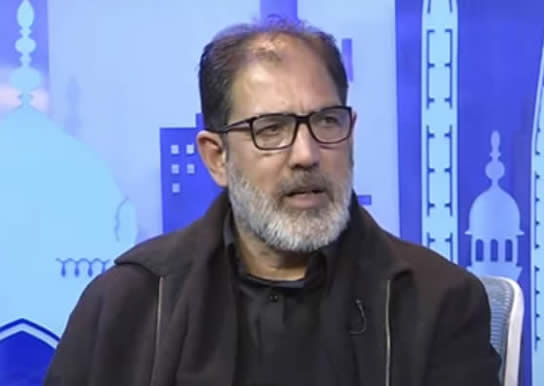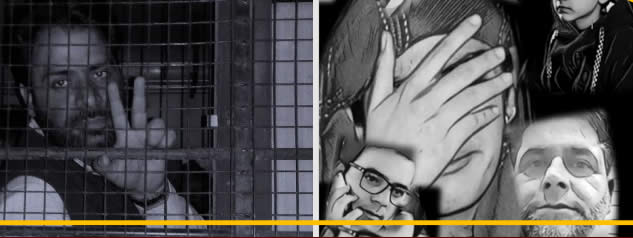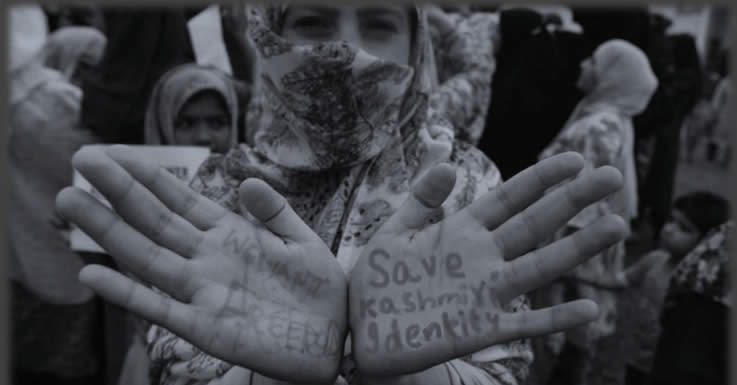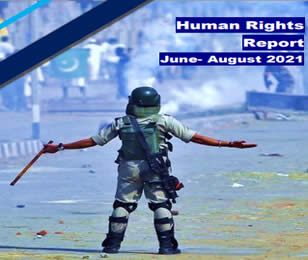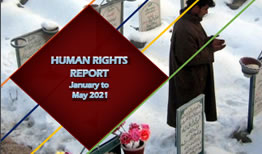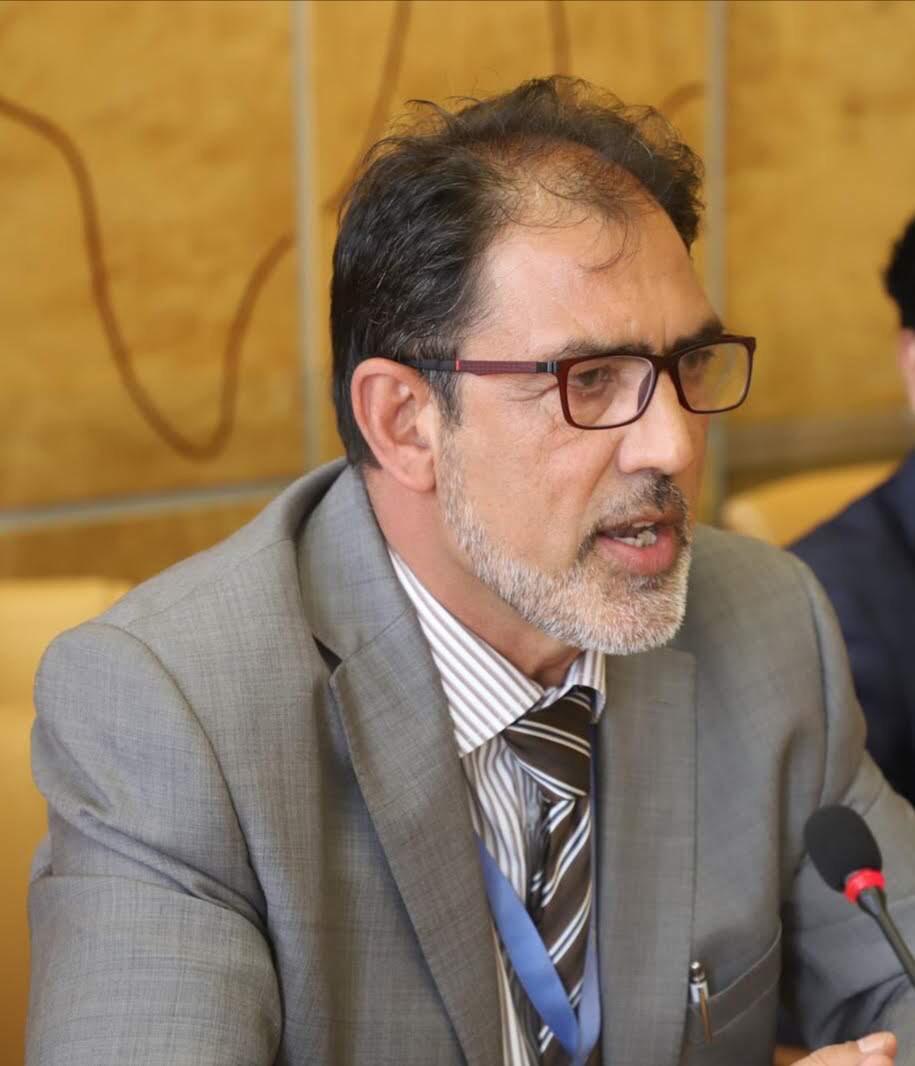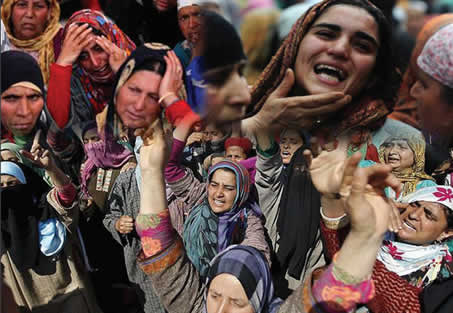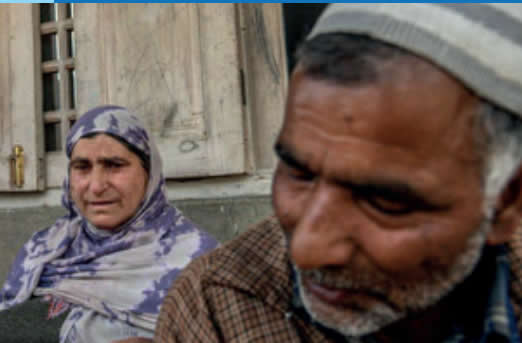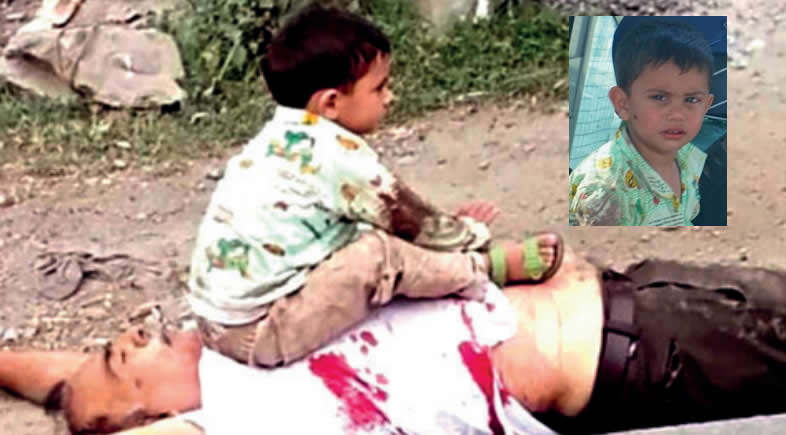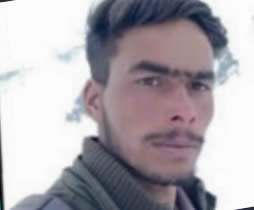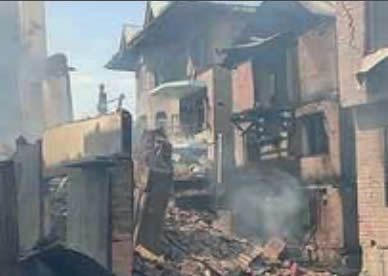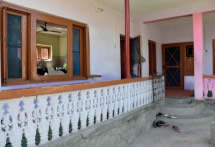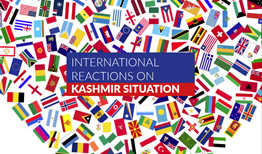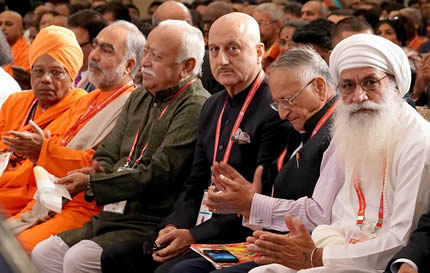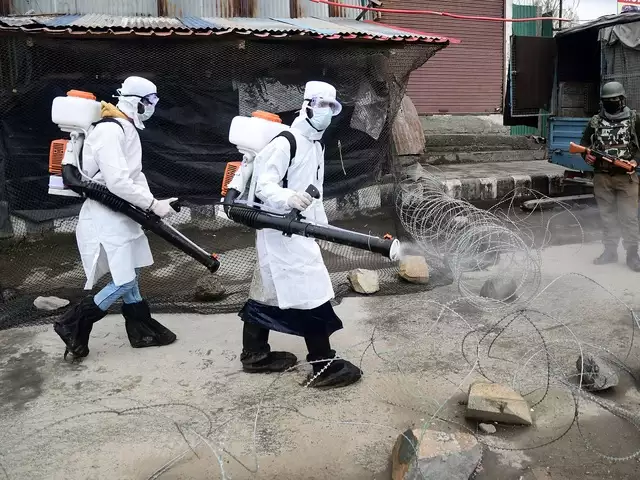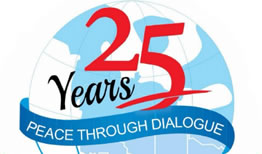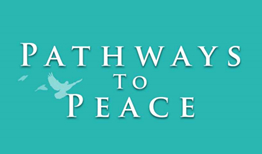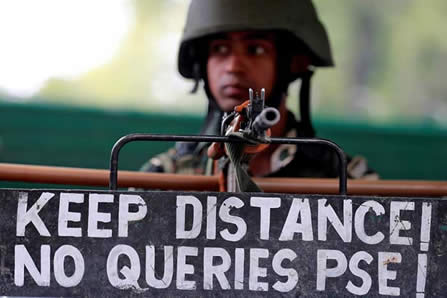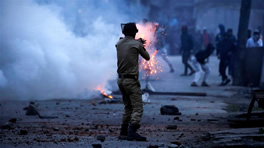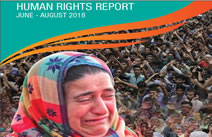Impact of violence on the children of Jammu and Kashmir”
Gabriela Sobiś
Enrolled in the 3rd year of uniform Master’s Degree in Law
Uniwersytet Wrocławski
Review of “Terrorized. Impact of violence on the children of Jammu and Kashmir” “Terrorized. Impact of violence on the children of Jammu and Kashmir” is a 2018 report published by the Jammu Kashmir Coalition of Civil Society (JKCCS), an combination of various non-funded, non-profit, campaign, research and advocacy organizations based in Srinagar, Jammu and Kashmir. The report thoroughly examines the effect that the ongoing conflict in Jammu and Kashmir has had on children. It mainly focuses on the occurrences from the last fifteen years before its publication – from 2003 to 2017. The piece provides a comprehensive assessment of how armed conflict has directly and disproportionately affected children in the region. Namely, it effectively illustrates that the children’s rights in Jammu and Kashmir have been continuesly violated by examining conducted arrests, sexual violence, and violence on the education of children. The report relies on quantitative data gathered from various sources such as news reports or legal documentation. Not only does it analyze existing data and case studies, but it also draws accurate conclusions and offers recommendations for solving this pressing human rights issue.
The report is undoubtedly effective in conveying the gravity of the problem at hand and providing reliable data and information as well as transforming them to propose solutions for a better future. Nevertheless, there are areas where additional context and clarification would have strengthened its performance. The authors of the report start by providing the historical context of the armed conflict in the region which is one of the oldest unresolved conflicts under the United Nations human rights protection system. High militarization and its effect on civilians, particularly children is emphasized, providing a consistent presentation of what the report covers. In the introduction, major challenges that the Kashmiri people face are recognized. They include India’s lack of recognition of the framework of international or non-international armed conflict laws. The authors also outline the aim of the report, conceptualize the definition of children, and provide the used approach which benefits the work’s credibility and clarity.
The second section discusses the nineties decade, more specifically the period from 1989 to when extreme violence against civilians took place. Notably, it is repeatedly argued that children were deliberately targeted, not just indirect victims of war. Moreover, the text includes information on large-scale military operations which resulted in civilian deaths, including children. It also covers the high frequency of rape, enforced disappearances, and illegal detentions, where children were found among the victims as well. Fortunately, the report does not ignore the psychological and social aspects of the conflict. It mentions many children losing their parents due to violence and the direct impact on children’s physical and psychological health of orphan-hood.
Next, the report provides the statistics concerning child killings and other violations between 2003 and 2017. The section illustrates elaborate data in a clear way, supported by graph visualisations. The readers are informed that 318 children were killed in Jammu and Kashmir between 2003-2017. The causes of death include 144 children killed by Indian armed forces, 47 children killed by unidentified gunmen, 12 children killed by militants and 10 children killed due to explosives. When it comes to the regional breakdown of child fatalities, 67.29% of child killings occurred in the Kashmir Valley, while 30.18% took place in the Jammu region. A crucial aspect of the report is that it identifies patterns in violence against children and shows how state repression was enhanced during mass uprisings. The worst years for child killings were 2006, 2010, and 2016 when respectively 50, 48, and 37 children were killed.
In the next section, the report focuses on exploring the illegal and administrative detention of minors. The authors scrupulously explain the use of harsh laws against minors, most notably the overly repressive Public Safety Act (PSA), which allows individuals to be detained
trial for up to two years and deprives them of provisions of liberty granted under both domestic and international law. The report manages to constructively depict the scale of the problem. It highlights, inter alia, that hundreds of children have been detained under the PSA. Moreover, in multiple cases, the authorities falsified birth records to classify minors as adults, depriving them of significant legal protection. The piece successfully illustrates the tragedies of people in Kashmir and evokes strong emotions by referring to specific cases, such as the arrest of the 16-year-old Rayees Ahmad Mir and detention of the 14-year-old Tariq Ahmad Tantray who was detained under PSA in 2016 and sent to Kathua Jail, 250 km away from his home. This section appears invaluable as it exposes the institutionalized legal abuse of children and shows how minors are criminalized when they should be the ones who are the most protected by the state.
The report also explores the sexual violence against children, which is weaponized by the occupant. Mentioned violations include rape, molestation, and sexual abuse of minors by security forces. The piece again presents true, heartbreaking stories of individuals, which helps visualize the severity of the crisis in Kashmir. The rape and murder of an 8-year-old Gujjar girl in Kathua serves as an illustration of how sexual violence is used as war tool to terrorize society. Importantly, the authors remind to bear in mind that sexual violence cases are immensly underreported due to stigma, fear of reprisals, and legal impunity of security forces.
Next section concerns the attacks on schools and violence against students. It illustrates how the conflict has disrupted education in Jammu and Kashmir. Once again, the readers are presented with a thorough data analysis. It can be found that 46 schools between 1990 and 2005 were occupied by security forces and that more than 400 schools were set on fire during the conflict. Most notably, in 2016, 35 schools were burned down, which had a grave impact on thousands of students. The report later provides the implications of the presence of army camps near schools. It is rightfully stated that it increases the risk of violence and sexual abuse of students. It can be derived that education itself has become a war zone, as students face daily harassment, violence, and are at risk of detention.. The last section is vital as it provides clear and useful solutions in the form of applicable policy recommendations. They include demilitarization of schools, ensuring accountability for sexual violence against minors, psychological support and rehabilitation for child victims of conflict as well as reparations for families of the victims. It establishes a human rights advocacy instrument and serves as a call for action as well as tangible changes at national and international levels.
One of the crucial advantages of the report at hand is that it follows a clear structure. It progresses from historical background to statistical analysis and ends with recommendations for the future. This organization enhances clarity and ensures a good understanding of the examined issue. Another strength is the consistency of the piece. It is persistent in recognizing and highlighting the fact that children are not just collateral damage but direct and deliberate victims of violence in Jammu and Kashmir. The use of statistics supported by visual graphs serves as the next key advantage. Including hard data undoubtedly strengthens the credibility of the report. Additionally, elements like graphs make it significantly easier to understand and visualise. Moreover, it is crucial that the report does not merely highlight issues but also provides clear and practical recommendations for state and non-state actors.
The specificity and applicability of these recommendations makes them particularly valuable. That being said, there is still some room for improvement. While the report effectively presents statistics on violence, it does not contextualize these figures with broader demographic data. For instance, it does not provide information on the total child population in Jammu and Kashmir or overall mortality rates, making it harder to assess the scale of violence relative to population size. Moreover, the absence of general population data for Jammu and Kashmir effects the possibility to contextualise and compare the presented data.
Finally, the report serves as a valuable tool for human rights advocacy as it successfully raises awareness of the grave impact that the conflict has had on children in Jammu and Kashmir. It is undoubtedly well-researched and provides an in-depth analysis of the presented data. Most importantly, it effectively brings attention to child rights violations in Jammu and Kashmir which is vital because every child deserves to have their rights protected and respected.
Related Reports
